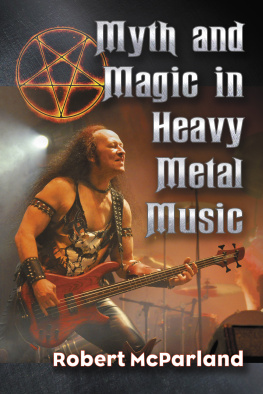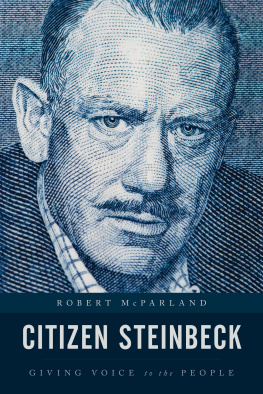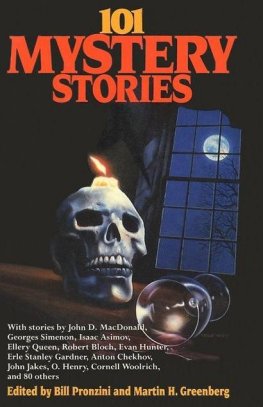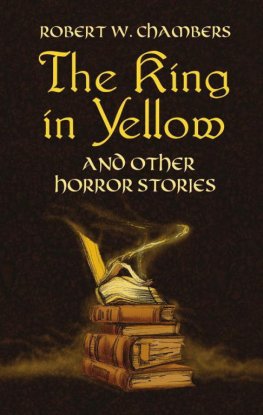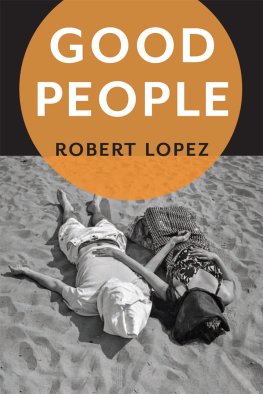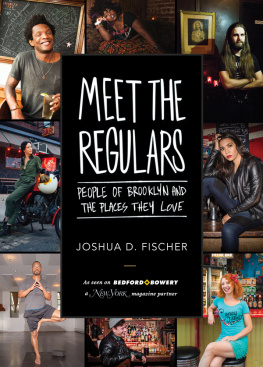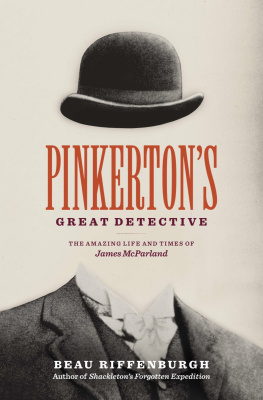Robert McParland - The People We Meet in Stories
Here you can read online Robert McParland - The People We Meet in Stories full text of the book (entire story) in english for free. Download pdf and epub, get meaning, cover and reviews about this ebook. year: 2012, publisher: Rowman & Littlefield Publishers, genre: Art. Description of the work, (preface) as well as reviews are available. Best literature library LitArk.com created for fans of good reading and offers a wide selection of genres:
Romance novel
Science fiction
Adventure
Detective
Science
History
Home and family
Prose
Art
Politics
Computer
Non-fiction
Religion
Business
Children
Humor
Choose a favorite category and find really read worthwhile books. Enjoy immersion in the world of imagination, feel the emotions of the characters or learn something new for yourself, make an fascinating discovery.
- Book:The People We Meet in Stories
- Author:
- Publisher:Rowman & Littlefield Publishers
- Genre:
- Year:2012
- Rating:3 / 5
- Favourites:Add to favourites
- Your mark:
- 60
- 1
- 2
- 3
- 4
- 5
The People We Meet in Stories: summary, description and annotation
We offer to read an annotation, description, summary or preface (depends on what the author of the book "The People We Meet in Stories" wrote himself). If you haven't found the necessary information about the book — write in the comments, we will try to find it.
The People We Meet in Stories — read online for free the complete book (whole text) full work
Below is the text of the book, divided by pages. System saving the place of the last page read, allows you to conveniently read the book "The People We Meet in Stories" online for free, without having to search again every time where you left off. Put a bookmark, and you can go to the page where you finished reading at any time.
Font size:
Interval:
Bookmark:
The People We Meet
in Stories
The People We Meet
in Stories
Literary Characters That
Defined the 1950s
Robert McParland
ROWMAN & LITTLEFIELD
Lanham Boulder New York London
Published by Rowman & Littlefield
An imprint of The Rowman & Littlefield Publishing Group, Inc.
4501 Forbes Boulevard, Suite 200, Lanham, Maryland 20706
https://rowman.com
6 Tinworth Street, London SE11 5AL, United Kingdom
Copyright 2020 by The Rowman & Littlefield Publishing Group, Inc.
All rights reserved. No part of this book may be reproduced in any form or by any electronic or mechanical means, including information storage and retrieval systems, without written permission from the publisher, except by a reviewer who may quote passages in a review.
British Library Cataloguing in Publication Information Available
Library of Congress Cataloging-in-Publication Data
Names: McParland, Robert, author.
Title: The people we meet in stories : literary characters that defined the 1950s / Robert McParland.
Description: Lanham : Rowman & Littlefield, 2020. | Includes bibliographical references and index.
Identifiers: LCCN 2020010025 (print) | LCCN 2020010026 (ebook) | ISBN 9781538130353 (hardcover) | ISBN 9781538130360 (epub)
Subjects: LCSH: American fiction20th centuryHistory and criticism. | Characters and characteristics in literature. | Social change in literature.
Classification: LCC PS374.C43 M37 2020 (print) | LCC PS374.C43 (ebook) | DDC 813/.540927dc23
LC record available at https://lccn.loc.gov/2020010025
LC ebook record available at https://lccn.loc.gov/2020010026
 TM The paper used in this publication meets the minimum requirements of American National Standard for Information Sciences Permanence of Paper for Printed Library Materials, ANSI/NISO Z39.48-1992.
TM The paper used in this publication meets the minimum requirements of American National Standard for Information Sciences Permanence of Paper for Printed Library Materials, ANSI/NISO Z39.48-1992.

A thank-you goes to Stephen Ryan and Deni Remsberg, who helped set this book in motion, and thanks to Jon Sisk, his assistant Chelsea Panin, and the team at Rowman & Littlefield for bringing it to completion. Previous reflections on James Baldwins Sonnys Blues appeared in the essay To the Deep Water in Interdisciplinary Humanities (Fall 2006).
The People We Meet in Stories
This book is about the literary characters that illustrate social changes in America in the postwar 1950s. From Holden Caulfield to Augie March, dozens of characters became familiar to anyone who opened American novels during those years. These characters entertained thousands of readers while revealing some of the underlying currents of ambition, desire, and concern that were central to the American dream. In the 1950s, literary voices unsettled readers and probed American society. The postwar 1950s brought antiheroes, or flawed heroes, to readers. Stories brought what critic Leslie Fiedler called the more post-apocalyptic fears and hopes of our blessed but immediately complex times. Poet Robert Lowell dubbed this period the tranquillized fifties. Literary critic Richard Chase called it a period of unresolved contradictions... seldom absorbed, reconciled, or transcended. Literature responded to life in this era. Ralph Ellisons Invisible Man and James Baldwins Go Tell It on the Mountain and Giovannis Room explored matters of identity. Conventional perspectives were challenged by the works of Jack Kerouac, the Beat poets Allen Ginsberg and Gregory Corso, and the clever and creative William S. Burroughs and his Naked Lunch. James Bond and Perry Mason were heroes of popular culture.
Why do we care about fictional characters? How do we feel about our relationship to them as we read? Most often we are wondering what they will do and whether they will succeed. We are engaged in curiosity and speculation. Will they win love or lose it? Will they defeat the adversary? Once we take an interest in a character, we may be carried along by the narrative and plot that unfolds the story of their life and adventures. We enter the experiences of fictional characters and their conversations.
When we pick up a novel, we set aside the recognition that these events are fiction, and we hope to be entertained. The reader practices the willing suspension of disbelief and moves in and out of this connection with the text, while still aware of daily reality. If the book is put aside and then returned to, the reader reenters and revives the imaginative encounter. Narrative leads us into identification, or it may encourage emotional responses or ethical judgments. One might become invested in the outcome for this character. When we look at a character as a person, we look at characteristics, or personality traits. Fictional characters become figures in the imagination of the reader. We share in the lives of these people.
What might fictional characters suggest to us about life and human experience? In a 2016 study conducted at Durham University in Britain, more than fifteen hundred readers responded to questions about their encounters with fictional characters in literature. According to Richard Lea of The Guardian, roughly four hundred of these readers offered detailed descriptions of their encounters. Lea points out that 19 percent said the voice of fictional characters stayed with them even when they werent reading and influenced the style and tone of their thoughts. It seemed to some of these readers as if the character had started narrating my world. Charles Fernhough, a psychologist involved in the study, said: For many of us, this can involve experiencing the characters in a novel as people we can interact with.
Stories can inform peoples emotional lives, wrote Cody C. Debistraty in the Atlantic in 2014. Stories can be a way for humans to feel that we have control over the world. They allow people to see patterns where there is chaos, meaning where there is randomness.... Storytelling especially in a novel allows people to peek into someones conscience to see how other people think. We know that this is a representation. Yet, we bring ourselves to this. Some part of ourselves observes that we may identify with or be found to have something in common with this character.
Of course, a story must engage us and draw us in to this concern and connection, or identification, with characters. Readers bring their knowledge to the reading experience. When we read, our interpretations are influenced by our past reading experiences and life experiences, our interests, point of view, values, and worldview. The experience of fiction urges us to respond to the characters position. A reader can maintain detachment and not be swept up in identification. (One might see characters as a structuralist like Roland Barthes viewed them: as verbal signifiers, as constructions made from words on a page.) Or, a reader may be drawn by some personal relevance that the text has for his or her life. One may be transported by the text. In any case, involvement in a text creates emotional connection with characters. It may prompt empathy for their goals, needs, and point of view, as well as concern about what will happen to them.
Literature portrays human beings and their relationships. These are imagined people who parallel our human lives, who express their uniqueness. Characters may provide us with information about the world, about the human condition, and about human psychology. For Richard J. Gerrig, a psychologist at Yale University, identification is a natural consequence of the structure of cognitive processing.
Next pageFont size:
Interval:
Bookmark:
Similar books «The People We Meet in Stories»
Look at similar books to The People We Meet in Stories. We have selected literature similar in name and meaning in the hope of providing readers with more options to find new, interesting, not yet read works.
Discussion, reviews of the book The People We Meet in Stories and just readers' own opinions. Leave your comments, write what you think about the work, its meaning or the main characters. Specify what exactly you liked and what you didn't like, and why you think so.


